Reincarnation Case of George Eliot (Mary Ann Evans) | Freda Chaney DD and Her Soul Mate, George Henry Lewes: Past Life Cases Solved with the Help of a Spirit Orb
- CATEGORY
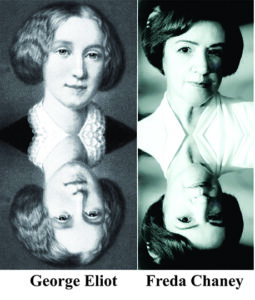 Proposed by: Freda Chaney, DD
Proposed by: Freda Chaney, DD
Affirmed in: Ryerson-Semkiw Reincarnation Research Session
From: Karma Road: Walking Through Time with George Eliot, by Freda Chaney, DD
Article by: Freda Chaney, DD
George Eliot and George Henry Lewes Reborn?
Am I a reincarnation of the nineteenth century novelist Mary Ann Evans, who is better known by her pen name, George Eliot? It was 2009 when I discovered this prolific author and I am still on a great adventure sorting through nearly one hundred similarities between us, which seem to point to that conclusion. I do not claim to have George Eliot’s writing talent, but there is no doubt of a writing gift that both of us realized at an early age and developed into our life’s work.
In 2018, Walter Semkiw, MD contacted me after reading my book, Karma Road: Walking Through Time with George Eliot. After a brief interview, he asked my permission to consult famed trance medium, Kevin Ryerson, on my behalf.
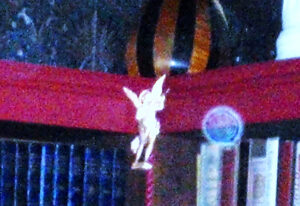 In Walter’s session, it was affirmed that I am a reincarnation of George Eliot, and in addition, my husband is a reincarnation of Eliot’s soulmate of 25 years, George Lewes. In fact, Norman has much in common with Lewes including philosophy, authorship and the support role he plays in my life.
In Walter’s session, it was affirmed that I am a reincarnation of George Eliot, and in addition, my husband is a reincarnation of Eliot’s soulmate of 25 years, George Lewes. In fact, Norman has much in common with Lewes including philosophy, authorship and the support role he plays in my life.
In addition to the Ryerson reading, Walter asked me to provide a photograph of myself in the same pose as a photo of George Eliot. Side-by-side comparisons reveal obvious similarities. If the eyes are the window of the soul, one can see that my eyes have the same intense look as Eliot’s. George Eliot’s picture reveals a long nose, graceful neckline and dark hair. My features are much the same.
Even our clothing choices over time have been similar. Looking back at studio photographs taken of me in 1994, I am wearing a Victorian style blouse with a cameo pin at the neck.
Family photos from the 1980s reveal more of the same wardrobe preferences, including my pilgrim collar dress and blouse similar to the ones George Eliot wore. (See the George Eliot statue in Nuneaton Square, UK.)
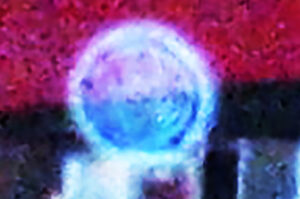 The Revelation in the Library: An Spirit Orb with a Message
The Revelation in the Library: An Spirit Orb with a Message
This intriguing story began in 2009 when I took a photograph of the library bookshelf in our bed and breakfast. Enlarging the photo, I found two female faces inside an orb.
Please click on the image in order to view the two women in the orb.
Note: As a point-of-reference, the woman on the right side of the orb appears to have a white object in her mouth. Freda, upon opening the book the orb hovered over, found a what looked like a replica of the women in the orb. Even head postures seemed similar.
The orb was perched atop a particular book with a red spine, George Eliot’s The Mill on the Floss (Heritage Club edition, 1963). Floss is the name of a river in England.
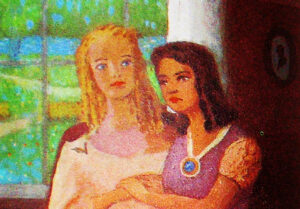 Replication of Book Cover Artwork Across Two Lifetimes
Replication of Book Cover Artwork Across Two Lifetimes
The book was unfamiliar to me. Because my husband and I love literature, Mill on the Floss was part of the collection of 15,000 titles that we I had purchased, though neither I or my husband had ever read The Mill on the Floss. Norman had set up the bookshelves when we moved into this house in 1998. This may be why I never noticed The Mill on the Floss before I took that photograph.
I rushed to tell my husband about the strange occurrence. He urged me to read the book—to learn what it might have to teach me. When I returned to the library to retrieve the book, I saw that the cover contained the image of a thatched cottage that was very similar to the cover of a book I had written. (House Blessings, 1997). Click on the book cover images to enlarge them.
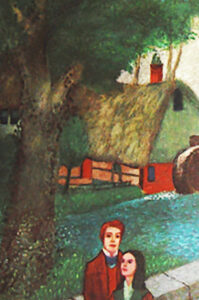
Opening Eliot’s book, I found a painting of two females sitting side-by-side that closely resembled the “faces” in the orb. I consulted an orb expert, Dr. Klaus Heinemann, to learn more about orbs. The Mill on the Floss project I undertook with Dr. Heinemann led to my story being published in Orbs: Their Mission and Messages of Hope (Hay House, 2010).
A Scientific Analysis of Orbs Found in Photographs by NASA and Stanford Physicist Klaus Heinmann PhD
Note: An explanation of why some orbs caught in photographs are considered to be spirit beings can be reviewed at:
Spirit Being Orbs: The Research of Physicist Klaus Heinemann, PhD
George Eliot’s Autobiographical Character in The Mill on the Floss Reflects Freda Chaney’s Life
The back story of my life portrays a simple country upbringing with a desire for furthering my education much like that of the protagonist Maggie in The Mill on the Floss. My life also reflects Eliot’s own in the same way since Maggie is an autobiographical character of Eliot.
I began writing at the age of twelve and studied creative writing and English composition at Otterbein College (now Otterbein University). I earned a divinity degree from the American Institute of Holistic Theology (AIHT) and attended writing workshops at Kenyon College.
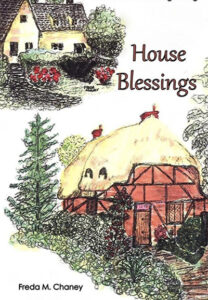 My first publication was poetry in a local newspaper and coincidentally, Eliot’s first publication was poetry in a newspaper. I am an avid reader. Among my favorite authors is Ralph Waldo Emerson. I dedicated a poem, The Gathering at Emerson’s in his honor. George Eliot met Emerson when she was a young lady. They shared a carriage ride to Stratford, England along with their influential friends, the Brays.
My first publication was poetry in a local newspaper and coincidentally, Eliot’s first publication was poetry in a newspaper. I am an avid reader. Among my favorite authors is Ralph Waldo Emerson. I dedicated a poem, The Gathering at Emerson’s in his honor. George Eliot met Emerson when she was a young lady. They shared a carriage ride to Stratford, England along with their influential friends, the Brays.
She told her friend, Sara Hennell, that Emerson was “…the first man I have ever seen.” And of that meeting, Emerson said of Eliot, “That young lady has a calm, serious soul.” In years to come, Emerson checked out Eliot’s books from the Boston Library. Clearly, the two thinkers admired one another’s work. Eliot read and reread the works of Emerson. She was also familiar with Henry David Thoreau, another of my favorite authors.
Norman Chaney as the Reincarnation of George Henry Lewes
My husband, Norman, a university professor of fifty years, also holds Emerson and Thoreau in high esteem. Norman’s book, The Appointed Earth (Amazon, 2017), shares many reflections of the Concord Transcendentalists. Together, as proprietors of The Chaney Manor Bed & Breakfast, Norman and I relish our private time reading and writing together much as Eliot and Lewes had done in the nineteenth century.
George Eliot’s soulmate, George Henry Lewes, is known for his philosophical writings, primarily his book, The Biographical History of Philosophy (1852). Norman also wrote a philosophical book, Six Images of Human Nature (Prentice-Hall, 1990), involving biographical accounts of six great philosophers. Lewes and Norman did not use pen names, but Eliot and I did.
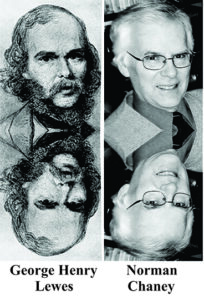 Freda Uses a Male Pen Name, as did Mary Ann Evans
Freda Uses a Male Pen Name, as did Mary Ann Evans
Early in my writing career, I used the pen name of Noel Bleu. George Eliot’s name at birth was Mary Anne Evans, but she used several variations of that name before she chose her nom de plume, George Eliot. Eliot chose to use a male pen name as she felt women authors of the age were not taken seriously. Her only marriage was to John Walter Cross in 1880, taking the name Mary Ann Cross. Oddly enough, my first husband’s name was John Walter.
With mounting clues in the way of synchronicities and a burning desire to know the truth, I consulted with a reputable psychic, Dr. Doris Cohen, author of Repetitions: Past Lives, Life, and Rebirth, (Hay House, 2008) to see if I could learn more about my suspected connection with the Victorian writer. The search deepened after the psychic told me that I was the younger of the sisters in question. In fact, George Eliot was the younger of the two sisters born to Robert and Christiana Evans. Dr. Cohen shared some of her tips for overcoming past life trauma.
After Confirmation by a Psychic, Freda Travels to Her Past Life Home
The revelation that I could be a reincarnation of Eliot stirred me to make connections in England, which is where Eliot lived. I consulted with the George Eliot Fellowship to immerse myself in all things Eliot, and shortly thereafter, I traveled with my husband to England.
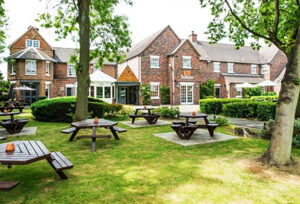
Staying at Eliot’s childhood home, the Griff House (now a Premier Inn and historical site featured in the image to the right), I was able to get a feel for the writer’s daily life at the homestead. I felt oddly at home from the outset. An interesting turn of events occurred when my husband became quite ill and had to be treated at the George Eliot Hospital, just moments from Griff House!
Karma Road: Walking Through Time with George Eliot
Soon after my trip to the Midlands of England, I began developing a book about the parallels between Eliot and me. The story was almost writing itself as I unfolded each of the similarities. I collected facts from Marghanita Laski’s biography, George Eliot (Thames and Hudson, 1973) and numerous other references I could get my hands on. Out of curiosity, I did a genealogy search. I learned that my maternal great-grandmother had married a man whose last name was the same as the novelist’s surname, Evans. Was this a connection?
Altogether, I found nearly one hundred parallels, recording seventy of them in my nonfiction book, Karma Road: Walking Through Time with George Eliot, (Amazon, 2015). The title sold well, brought speaking engagements, and was endorsed by The Science Behind Law of Attraction magazine as a “Must Read Book.”
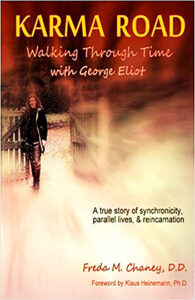 Although my book was published, the synchronicities continued. The more I searched, the more baffled I became. One day as my husband and I were shopping in a second hand store, I saw a set of matching numbered volumes on a low shelf. I reached for one of the books and opened it to find Eliot’s poem The Choir Invisible. I bought the set, and upon arriving home, I began to search through the contents pages of each book. I learned that there was only one poem in the entire set of books that was written by George Eliot. What were the odds of me choosing the exact book from that store shelf, and opening to the exact page to find Eliot’s poem?
Although my book was published, the synchronicities continued. The more I searched, the more baffled I became. One day as my husband and I were shopping in a second hand store, I saw a set of matching numbered volumes on a low shelf. I reached for one of the books and opened it to find Eliot’s poem The Choir Invisible. I bought the set, and upon arriving home, I began to search through the contents pages of each book. I learned that there was only one poem in the entire set of books that was written by George Eliot. What were the odds of me choosing the exact book from that store shelf, and opening to the exact page to find Eliot’s poem?
On another occasion, while traveling in Amherst, Massachusetts, my husband and I stopped to tour the Emily Dickinson homestead. I had always been intrigued by the recluse poet. The tour guide led us to Emily’s bedroom on the second floor. As soon as I entered the room, I saw a portrait of George Eliot on the wall! We watched a video that revealed Emily Dickinson was a fan of George Eliot. The Dickinson family library had contained some of her novels.
The continuing Eliot synchronicities involved other family members as well. My daughter, Vicki, presented me with a leather-bound collection of George Eliot’s books that she had found while on vacation. I saw that the embossed initials on the front cover appeared to be mine! The initials are GE, but in the Old English font initials laid one over another, they look like FC!
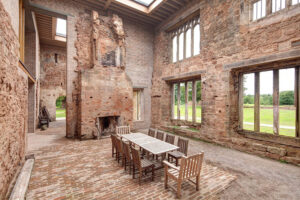
In 2015 I returned to England with my daughter to present my book, Karma Road, at the inaugural Writers in Warwickshire Festival at Astley Castle. We stayed at the Griff House. For me, it was like returning home. We were given a tour of the attic (now private quarters for the hotel manager’s family) where Eliot played during her childhood. This attic is mentioned as Maggie’s retreat in The Mill on the Floss.
More Gems from the Past Life Parallels List
Below are additional similarities between Eliot and me from the Appendix of Karma Road.
ART/MUSIC: Eliot loved the common, even in paintings. Her favorite were the Dutch painters. Similarly, my favorite painter is Johannes Vermeer. I am drawn to the common in Dutch country scenes. Eliot owned a mahogany grand piano. She played quite well, and enjoyed going to concerts and theater. Eliot was friends with composers Liszt and Wagner. My husband and I have owned a mahogany parlor grand piano since 1996. We attend concerts and theater together. Both Eliot and I have experienced music soul deep.
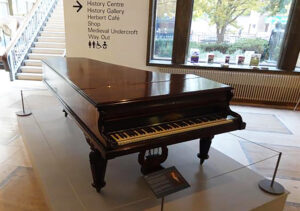
BIRTHDAYS: Eliot was born on November 22. I was born on November 3. I was named after my paternal Aunt Freda who was stillborn. Her headstone records that her birthdate is the same as George Eliot’s!
DIVINITY STUDIES: George Eliot studied divinity and translated religious texts. I studied divinity and earned my doctorate from AIHT. I have written articles for spiritual publications. Like Eliot, I have been challenged finding truth through strictly Christian means.
FAMILY: Eliot’s mother died when she was sixteen. My mother died when I was an infant. We were both deeply affected by our early losses. For lack of a mother, we were led to seek moral and emotional support from our fathers and brothers.
As adults, Eliot and I sought the companionship of men over the friendship of women. Eliot’s father, Robert Evans, doted on his youngest daughter. He managed all aspects of her education, socialization and religion. He feared she may not attract a husband because of her lack of beauty. When her father died in 1849, Eliot was a spinster of 29 years. My father controlled all aspects of my early years at home and attempted to control me emotionally after I married. As a result of our fathers’ overbearing ways, we had lifelong difficulty in our father-daughter relationships.
George Eliot’s brother, Isaac, was both a positive and negative influence in her life. During their childhood years, Eliot looked up to her brother. Being close in age, they spent much time adventuring together. Soon after George Eliot moved with her father to Coventry, she quit attending church. Isaac disapproved of how his sister was living. With his father’s influence, he devised a plan to bring his sister back to her senses. Isaac’s judgment and subsequent rejection would last decades and influence the entire family against Eliot.
 In 1878, George Lewes, Eliot’s first husband passed away and Eliot married John Walter Cross in 1880.
In 1878, George Lewes, Eliot’s first husband passed away and Eliot married John Walter Cross in 1880.
George Eliot, a short time later, on Dec 22, 1880, received a long-awaited letter of reconciliation from Isaac. This challenging sibling relationship is Eliot’s focus in The Mill on the Floss. It touched me deeply because as a young girl, I spent much time adventuring with my younger brother on the family farm. When my brother joined the military, married, and started a family, our lives drifted apart. My father was often at the root of gossip that came between my brother and me. It is interesting to note that my brother and I were reunited when I nearly died from a fall in 2018.
HEALTH CHALLENGES: George Eliot died of kidney failure. I had painful kidney infections as a child. In addition, I have been warned to stop taking over-the-counter pain relievers that might damage my liver and kidneys. I now prefer natural alternative pain relief. It would seem that the orb introducing this parallel story of authors was trying to message me about the risk of kidney failure that ended Eliot’s life.
RESIDENCES: As an adult, Eliot and her soul mate lived in the towns of Worthing and Richmond in England. Among my past residences in Ohio are Worthington and a farming community on the outskirts of Richmond. The Griff house, Eliot’s early childhood home, circa 1800, was a two-story red brick house with attic. My current home of twenty years, built in 1823, is a two-story red brick house with attic. Both have a central front entry. The driveways to the Griff House and the Chaney Manor are long, both ending in a circular turn around where a single yew tree stands.
PARANORMAL: My introduction to orbs included viewing Orbs: The Veil is Lifting DVD (Merkabah Productions, Beyond Words, 2007), and reading The Orb Project (Beyond Words/Atria, 2007). I was surprised to learn that Eliot had written a novella titled The Lifted Veil about a paranormal event.
 PERSONALITY: George Eliot was an overachiever in all that she did. From an early age, she was sensitive about what others thought of her. When she met George Lewes, she became grounded in a relationship that offered her the companionship she had always wanted. He calmed her when publishers or reporters gave her an unfavorable review. Lewes was soon managing publisher correspondences for her so that she could concentrate on writing. And write she did! She drove herself to produce fictional masterpieces for which she spent most of her time researching details. My personality is much the same, but unlike Eliot, I have total control of my own writing, editing, publishing and the correspondence that all of that entails. Norman is my ear and best critic. In this way, he mimics Lewes’ role in Eliot’s life.
PERSONALITY: George Eliot was an overachiever in all that she did. From an early age, she was sensitive about what others thought of her. When she met George Lewes, she became grounded in a relationship that offered her the companionship she had always wanted. He calmed her when publishers or reporters gave her an unfavorable review. Lewes was soon managing publisher correspondences for her so that she could concentrate on writing. And write she did! She drove herself to produce fictional masterpieces for which she spent most of her time researching details. My personality is much the same, but unlike Eliot, I have total control of my own writing, editing, publishing and the correspondence that all of that entails. Norman is my ear and best critic. In this way, he mimics Lewes’ role in Eliot’s life.
POETRY: My poem Harmony published in House Blessings (1997) and in Oh God, Papa (2015), contain similar phrases to Eliot’s poem The Choir Invisible (1867). Before 2009, I had never read Eliot’s poem. The following lines from Eliot’s The Choir Invisible appear on her grave marker in Highgate Cemetery, London:
“Of those immortal dead who live again/In minds made better by their presence.”
Compare these lines to my poem, Harmony, provided at the end of this article, made up of prose regarding the soul.
Summary
The year 2019 marks the bicentennial celebration of George Eliot’s birth. Her novels come back to life, characters are heralded and nineteenth century plots are refreshed for screenplay and theater. For those of us who love Eliot’s books Middlemarch, Daniel Deronda, Silas Marner, and of course The Mill on the Floss, we renew our appreciation as though Eliot wrote these timeless books for us as individuals—to help us through the mire of everyday life. I certainly can attest to the fact that Eliot has played an integral role in opening my eyes to what is real, lasting, and worthy.
And yet we are born into each lifetime to learn, to become, to express to the best of our ability, to evolve where we are placed. Each lifetime has infinite value, and each must be honored as such. I realize the immensity of this charge in my current life. I am not holding onto Eliot’s life and preening feathers over seemingly obvious connections, but rather, feeling humbled that I have had the opportunity to learn from Eliot’s life so that I can move forward with my life as Freda.
My friend, Dr. Heinemann put it this way, “Never lose track of what is important here—and that is that many people learn through your life’s experiences, insights pertaining to their own lives. This will help them find their purpose, grow in consciousness…and this will be beneficial to all. That’s the greater picture.”
 In the final paragraph of Chapter 20 of Karma Road, I wrote, “If Eliot is connected to my existence, and it seems she is, her soul is longing for evolution, and it is now my turn to shine—to prove that her life was a step up the ladder. My life is yet another step. George Eliot found the voice she needed in her lifetime. Now it was time for me to find my own. Sue Monk Kidd, best known for her 2001 novel, The Secret Life of Bees, said in her book, Firstlight (Penguin, 2007), “All personal theology should begin with the words: Let me tell you a story.” I have told you mine. My name is Freda.
In the final paragraph of Chapter 20 of Karma Road, I wrote, “If Eliot is connected to my existence, and it seems she is, her soul is longing for evolution, and it is now my turn to shine—to prove that her life was a step up the ladder. My life is yet another step. George Eliot found the voice she needed in her lifetime. Now it was time for me to find my own. Sue Monk Kidd, best known for her 2001 novel, The Secret Life of Bees, said in her book, Firstlight (Penguin, 2007), “All personal theology should begin with the words: Let me tell you a story.” I have told you mine. My name is Freda.
Harmony, by Freda M. Chaney, from House Blessings (1997) and Oh God, Papa, (2015)
“The soul the foot is wearing does not diminish with the walk,
but springs on eager wings to become the hawk.
The soul selects a melody for two, though heard by only one,
bears the burden of truer sounds thrumming at the drum.
The natural ear cannot hear a truth as deep as this—
betrays itself with a single, silent hiss.
The soul the hand is wearing feels the moment to be thrust, yet lets it slip with certainty when it must.”
Principles of Reincarnation-Understanding Past Lives
 Physical Resemblance in Reincarnation Cases: In the cases of George Eliot | Freda Chaney and George Henry Lewes | Norman Chaney, the shapes of the faces are similar. In reincarnation cases, bone structure or facial architecture seems to stay consistent, though cosmetic or soft tissue features can vary through lifetimes.
Physical Resemblance in Reincarnation Cases: In the cases of George Eliot | Freda Chaney and George Henry Lewes | Norman Chaney, the shapes of the faces are similar. In reincarnation cases, bone structure or facial architecture seems to stay consistent, though cosmetic or soft tissue features can vary through lifetimes.
Past Life Talent: The writing talent of George Eliot and the philosphical genius of George Henry Lewes have been expressed in the lives of Freda and Norman Chaney. The transmission of talent and abilities are observed in many documented reincarnation cases. These include:
Reincarnation Case of Anne Frank | Barbro Karlen
Reincarnation Cases of Paul and Mette Gauguin | Peter Teekamp and Michelle Moshay
Reincarnation Case of General John B. Gordon | Fire Chief Jeff Keene
Reincarnations of Laurel and Hardy
Planning Lifetimes and Relationships Renewed through Reincarnation:
 George Eliot and her soul mate, George Henry Lewes, have been reunited in contemporary times in the personas of Freda and Norman Chaney.
George Eliot and her soul mate, George Henry Lewes, have been reunited in contemporary times in the personas of Freda and Norman Chaney.
Spirit Beings in Reincarnation Cases: In solved reincarnation cases, spirit being telepathic messages are frequently observed. It seems that the individuals in the spirit world want humanity to understand the reality and mechanics of reincarnation. In this case, an orb, which may represent a spirit being or a visual projection created by a spirit being, led to the Freda discovering a past life of hers. Click on the orb image to enlarge it.
Visit: Freda Chaney’s Website
Photo of Freda (2018) by Warren Corder, “Warbec Photography”